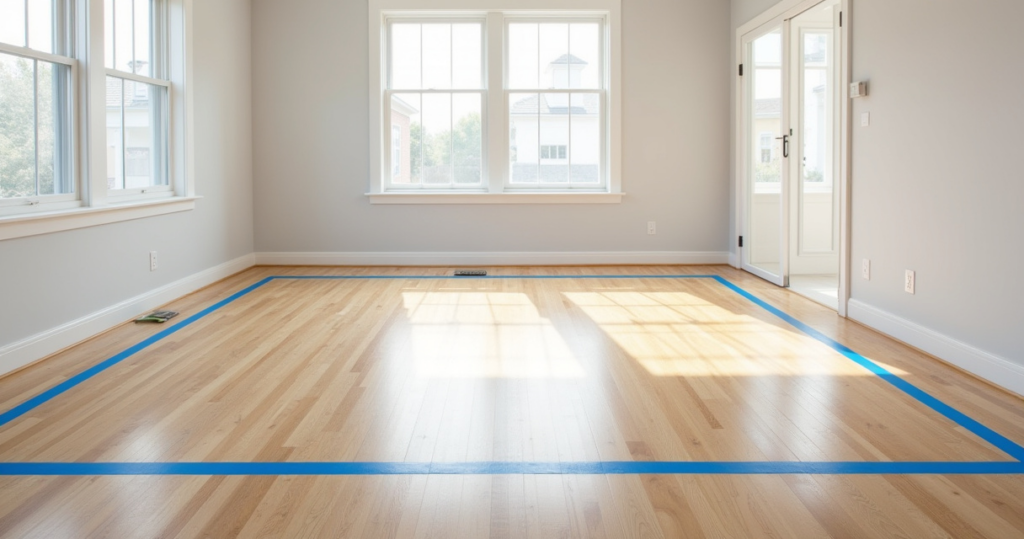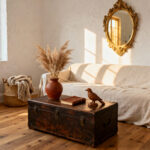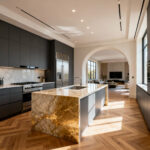Picture this: You’re standing in a home in Jodhpur. The afternoon sun filters through a jali screen, casting intricate patterns on the floor. In the dining room, there isn’t just furniture; there’s a story. A massive table, carved from a single slab of mango wood, is surrounded by chairs upholstered in a vibrant, block-printed textile. This room isn’t just for eating. It’s the soul of the home, a place for laughter, connection, and sharing life. You want that, right? A dining room that feels deeply, authentically you.
That’s what people always ask me about. How do you create that feeling? It’s not about finding a matching “set” from a big-box store. That’s just noise. What really matters is curating pieces that tell your story and create a space for new ones to unfold. It’s about blending heart with harmony.
I used to think finding the right pieces was the hardest part. Then I watched a client nearly return a stunning, artisan-made table because they hadn’t considered the simple flow of traffic from the kitchen. The real challenge is weaving it all together. So, let’s talk about how to do it right. Here are the shortcuts and secrets I wish I’d known from the very beginning.
Foundational Planning and Assessment (Part 1)
Before you fall in love with a single chair or table, we have to lay the groundwork. This is the unglamorous part that everyone wants to skip, and it’s also the part that will save you the most money and heartache. Think of it as preparing the canvas before you paint.
1. Accurately Measure Your Dining Space for Optimal Fit
Okay, I know. “Measure your space.” It sounds so obvious, but can we talk about why almost everyone gets this wrong? They measure the walls, jot it down, and think they’re done. That’s not the real story. You need to measure the living space—the space where human beings will actually be moving, pulling out chairs, and carrying plates of delicious food. The biggest mistake is forgetting about the “negative space.”
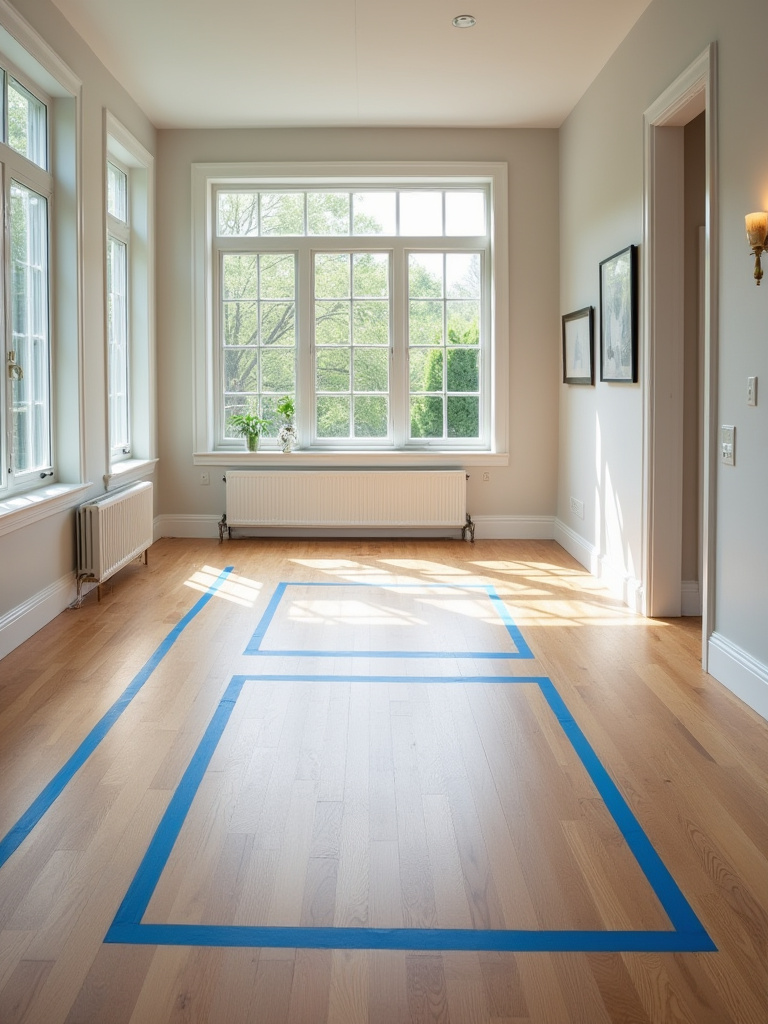
A client once bought a gorgeous eight-seater table that technically fit in their room. But once the chairs were in, you had to turn sideways to shimmy past. It felt cramped and anxious, the opposite of what a dining room should be. Don’t let that be you. Get some painter’s tape and mark out the table on the floor. Then, pull the “tape chairs” out as if someone were getting up. Can you still walk around comfortably? If not, the table is too big. This simple trick costs nothing and will save you everything.
The goal isn’t just to fit furniture in; it’s to create a feeling of ease and grace.
2. Define Your Dining Room’s Primary Function and Usage
So, what is your dining table really for? The corporate speak will tell you to “define your primary function.” What I’m asking is: what is the soul of this space? Is it the chaotic heart of the home where homework gets done, Legos are built, and daily meals are shared? Or is it a serene sanctuary for formal dinners, quiet conversations, and celebrating milestones? Be brutally honest with yourself.
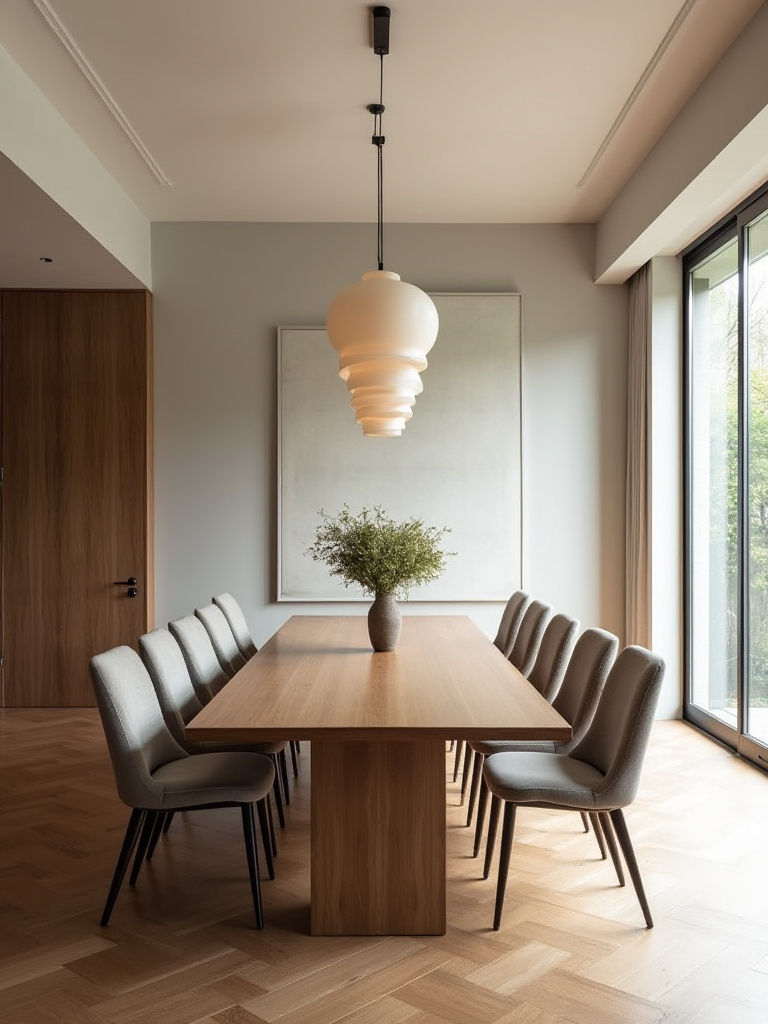
A delicate, lacquered table is a work of art, but it will weep under the daily assault of crayon marks and spilled juice. And a rugged, rustic farmhouse table might feel out of place in a home built for elegant, adults-only dinner parties. I once had a client who insisted on a formal silk upholstery for her chairs, but she had two toddlers. After one messy pasta night, she called me in tears. We swapped them for a beautiful performance velvet that looked just as luxe but could be wiped clean. Don’t buy for the life you think you should have; buy for the beautiful, messy, wonderful life you actually live.
The material and style should serve the room’s energy, not fight against it.
3. Harmonize Dining Furniture Style with Your Home’s Aesthetic
“Harmonize” is a lovely word, but let’s get real: it means your dining room shouldn’t look like it crash-landed from another planet into your home. The biggest BS everyone is told is that everything needs to “match.” Please, don’t do that! Matching is boring. Harmony is about creating a conversation between the pieces. Your dining furniture should feel like a natural extension of the story your home is already telling.
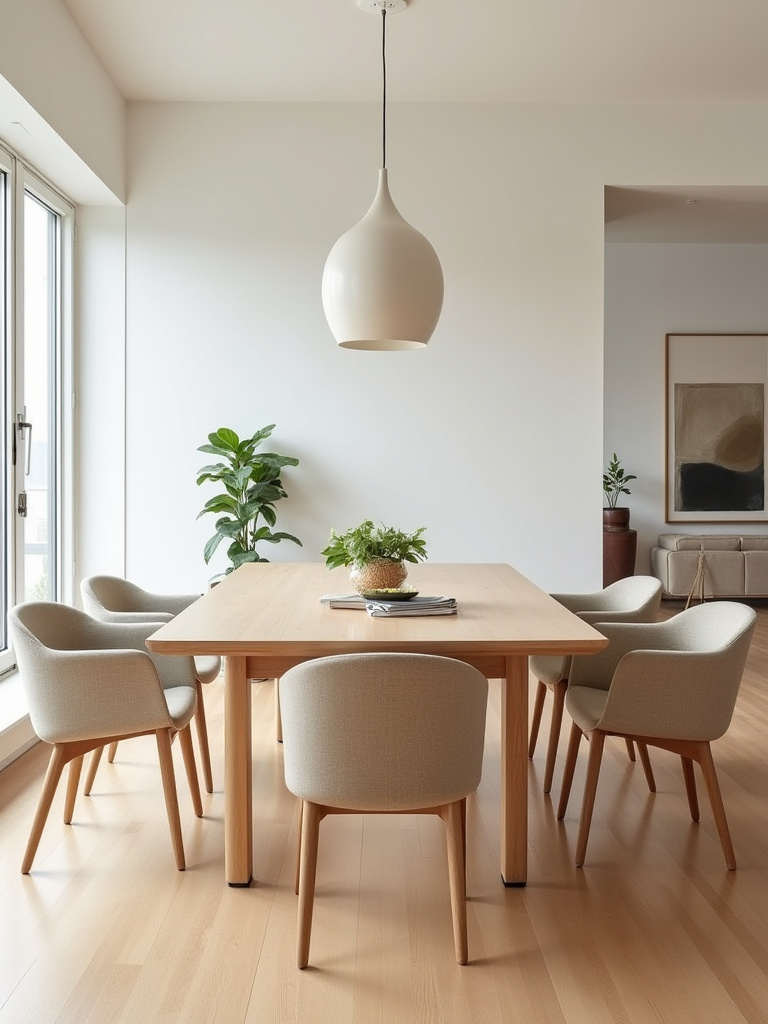
Look around your other rooms. What do you see? Clean, modern lines? The warmth of reclaimed wood? The bright, joyful chaos of a bohemian home? Let that be your guide. A friend of mine lives in a sleek, minimalist apartment, but she inherited her grandmother’s ornate, hand-carved rosewood dining chairs. Instead of getting rid of them, she paired them with a brutally simple glass-and-steel table. The contrast was electric. It worked because the two styles weren’t fighting; they were highlighting each other’s beauty. The chairs told a story of heritage, and the table told a story of the now.
Your dining room can be the place where different parts of your story come together.
4. Establish a Realistic Budget for Quality Dining Pieces
Let’s talk money. I hate when people get cagey about this. Creating a budget isn’t about limiting yourself; it’s about empowering you to spend wisely. The noise in the design world will push you toward cheap, fast-fashion furniture that looks good for a year and then falls apart. That is not a good investment. What truly matters is allocating your funds for longevity.
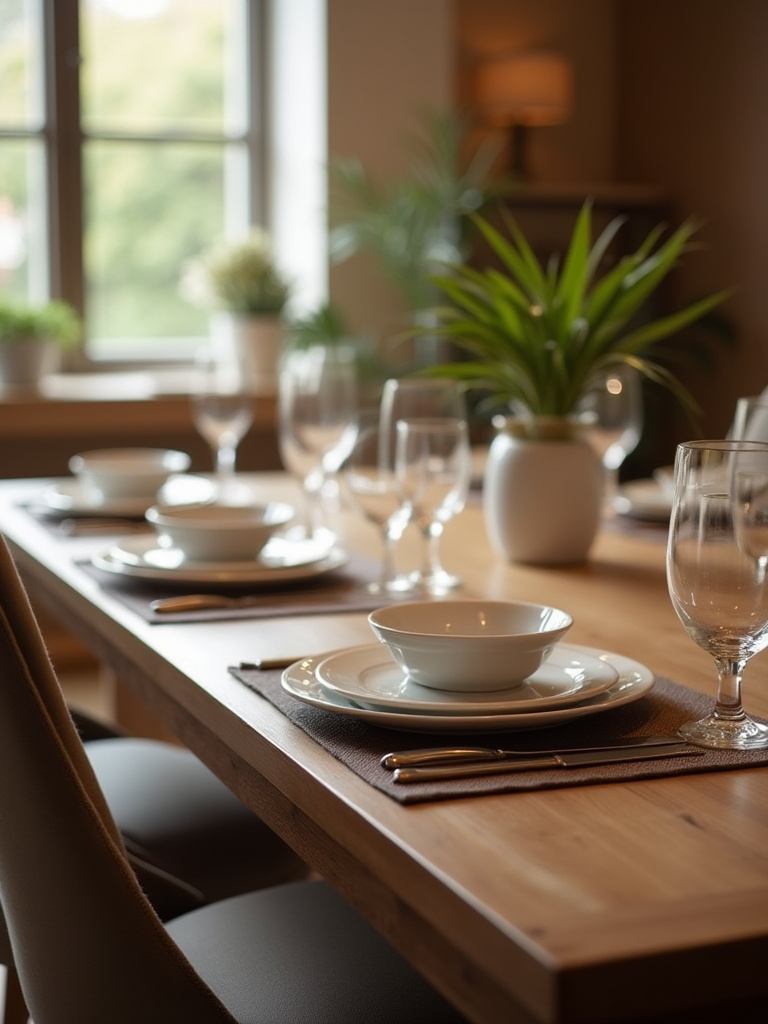
My advice? Splurge on the table. It is the anchor, the piece that will witness everything. Then, get creative with your chairs. You don’t need to buy them all at once or from the same place. I absolutely love a collected look, with different but complementary chairs around the table. It tells a much more interesting story. And don’t forget the hidden costs—delivery and assembly can be a shock if you haven’t planned for them. I always tell my clients to build in a 10% “surprise” buffer. That way, if you find the perfect vintage sideboard or fall in love with a slightly more expensive set of chairs, you have the freedom to say yes.
Quality lasts. It becomes an heirloom, not landfill.
Foundational Planning and Assessment (Part 2)
We’ve got the bones of the plan down. Now, let’s flesh it out with the human element—thinking about the people who will actually fill these seats and bring the room to life.
5. Strategize Seating Capacity to Accommodate Guests Comfortably
Here’s a secret: being a good host has very little to do with your cooking and everything to do with making people feel comfortable and cherished. A huge part of that is giving them enough physical space. We’ve all been to that dinner where you’re knocking elbows with your neighbor and can’t quite pull your chair out without bumping into the wall. It’s awkward. The goal here is graciousness.
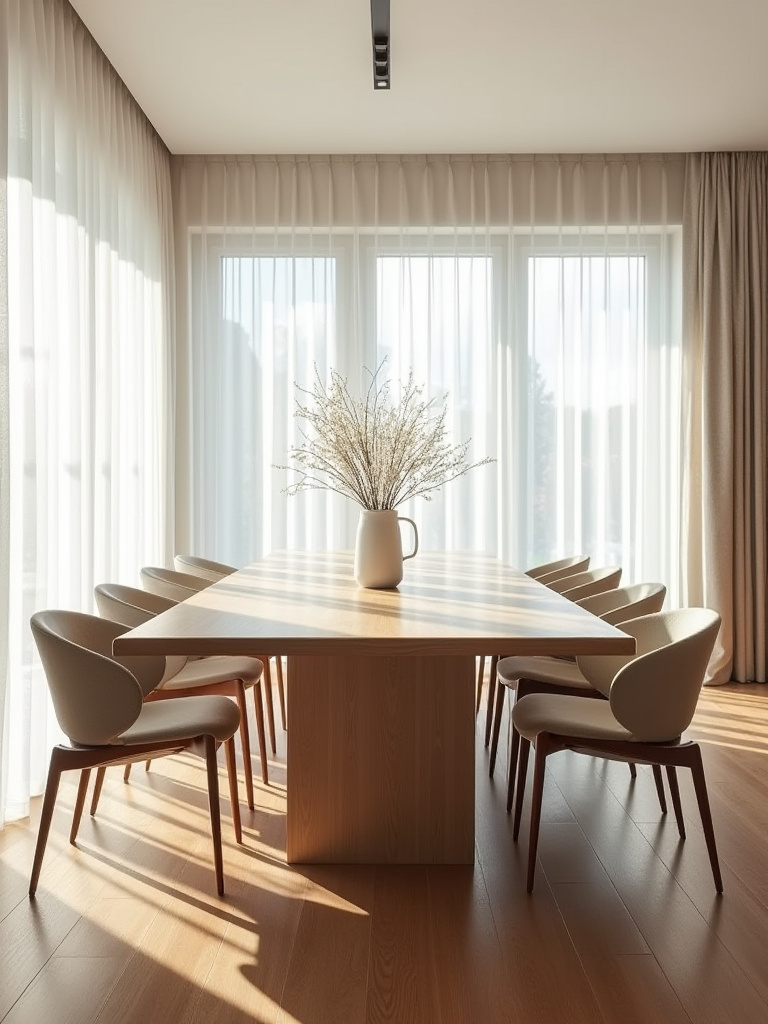
The rule of thumb is about 24 inches of space per person along the edge of the table. But I say, be more generous if you can. Think about the energy. In India, big family gatherings are the norm, and an extendable table is a godsend. It allows the space to feel intimate for your day-to-day life but can expand to welcome everyone for Diwali or Eid. The ultimate shortcut? Get an extendable table. It is the single most versatile piece you can own, adapting to your life as it changes.
Make your guests feel so comfortable that they lose track of time. That’s the sign of a perfect gathering.
6. Evaluate Existing Decor to Integrate New Furniture Seamlessly
Before you bring anything new into your home, take a moment to honor what’s already there. Your new dining furniture needs to have a conversation with your existing art, rugs, and colors. A common mistake is buying a piece in isolation because you love it in the showroom, only to get it home and realize it screams at everything else in the room.
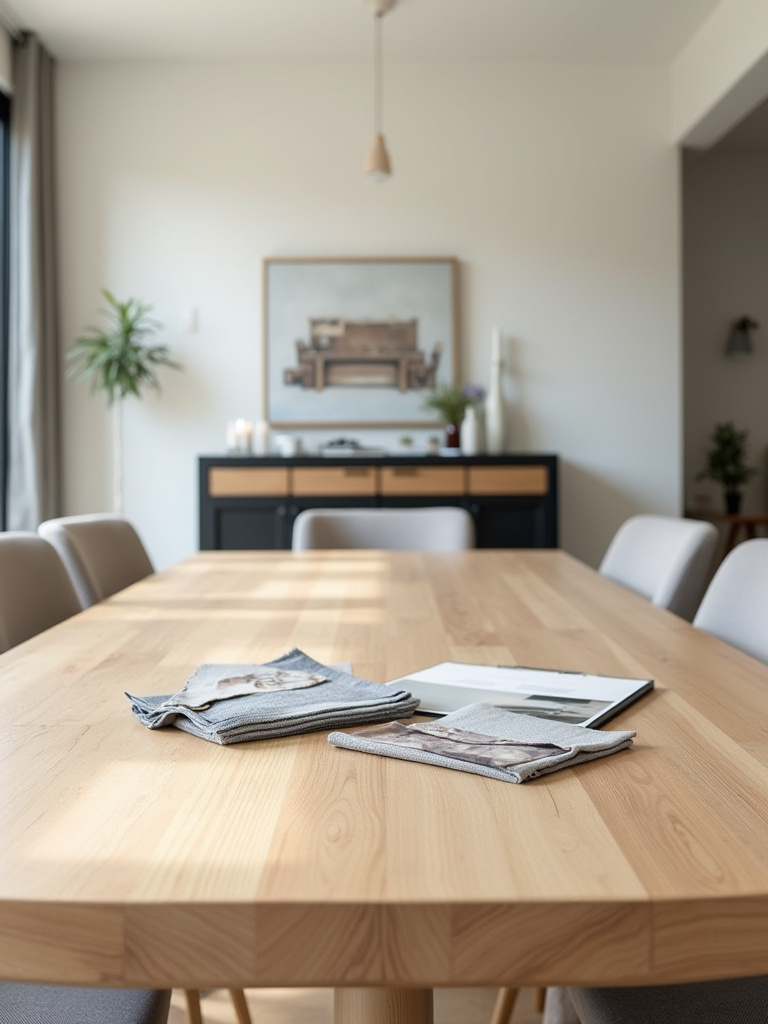
Take pictures of your space. Grab a paint chip of your wall color. Take a photo of the art that hangs nearby. Create a small digital mood board. I know it sounds like extra work, but it takes ten minutes and saves you from making a thousand-dollar mistake. It’s not about matching colors perfectly; it’s about making sure the undertones play well together. A cool gray wall might clash horribly with a warm, honey-toned oak table. Look for common threads—a color, a texture, a metallic finish—that can tie the new with the old.
Your home should feel like a symphony, with every piece playing in harmony, not a battle of the bands.
Core Furniture Selection and Setup (Part 1)
Now for the fun part! Let’s choose the heroes of our story: the table, the chairs, and the essential supporting cast.
7. Choose the Ideal Dining Table Shape for Your room dimensions
The shape of your table completely dictates the energy of the room. A long, rectangular table feels more formal, classic, and is brilliant for narrow rooms. It creates a clear head of the table and is wonderful for creating dramatic tablescapes. Think of the grandeur of a Mughal banquet hall—that’s the vibe. It directs the flow of conversation in a more linear way.
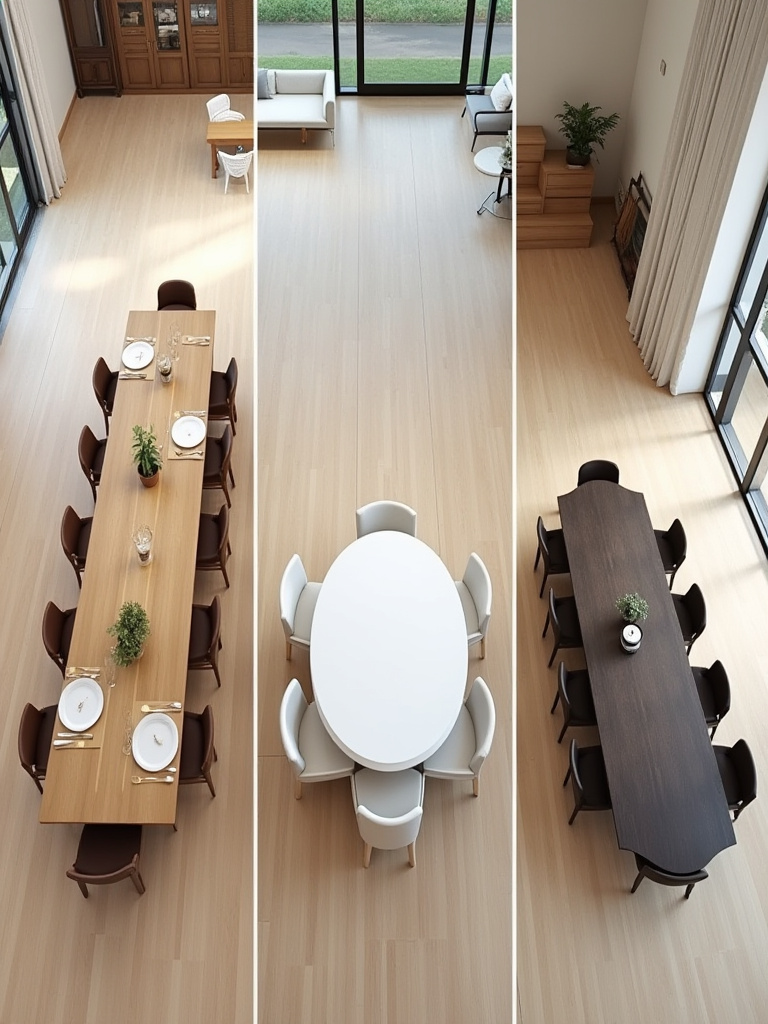
A round or oval table, on the other hand, is all about intimacy and connection. There’s no head of the table, so everyone is equal. Conversation flows more easily, and it’s fantastic for smaller, squarer spaces because it has no sharp corners to bump into. I love a round table for families; it feels so communal and cozy, echoing the spirit of sharing a thali meal where everyone is connected. A confession: my own dining table is round. I find it’s the best shape for lingering, laughing, and deep conversation.
Let the shape of your room guide you, but let the energy you want to create make the final decision.
8. Select Comfortable Dining Chairs for Prolonged Enjoyment
Can we please talk about uncomfortable dining chairs? It’s a pet peeve of mine. A beautiful chair that makes your back ache after twenty minutes is a failure as a design object. A good dining chair should invite you to linger, to have one more cup of chai, to share one more story. The comfort is in the design, not just the cushion.
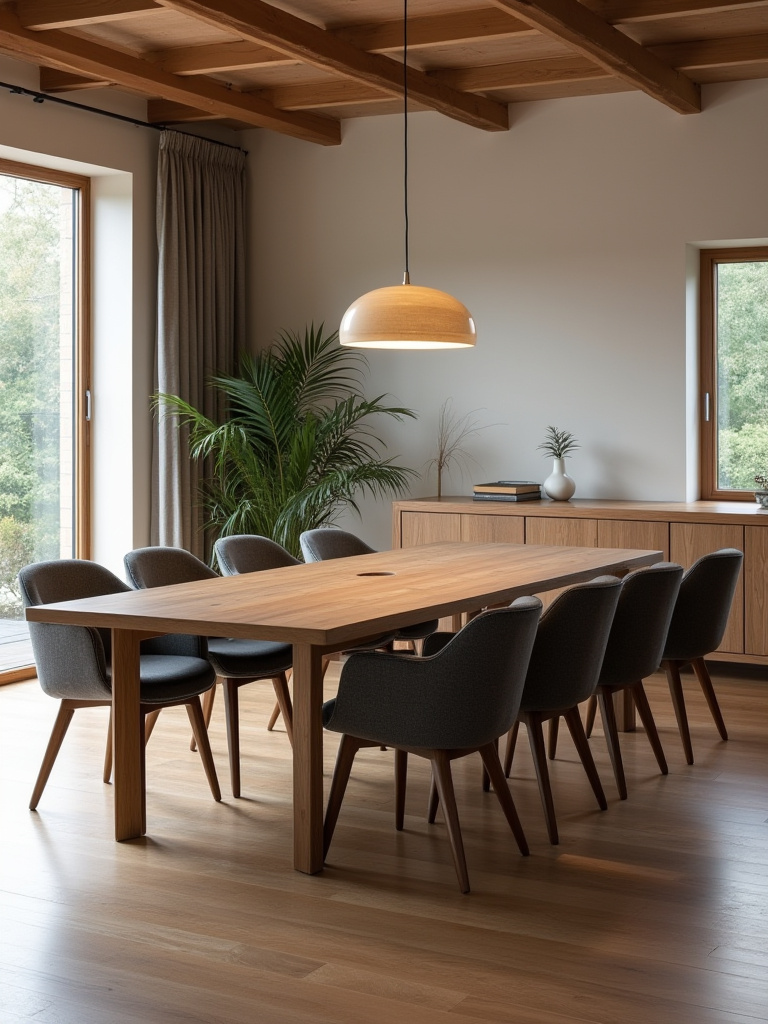
When you’re testing chairs, don’t just perch on the edge for five seconds. Sit back. Lean. Pretend you’re in the middle of a fantastic dinner conversation. Is there good back support? Is the seat deep enough? A hard-carved wooden chair from Rajasthan can be incredibly comfortable if it’s ergonomically shaped. An upholstered chair is wonderful, but make sure the fabric is durable. Think performance velvets, treated linens, or even a high-quality leather that will only get better with age. The shortcut? Don’t prioritize looks over feel. Your guests will thank you.
The purpose of a chair is to hold a person, not just to look pretty in a photograph.
9. Incorporate a Buffet or Sideboard for Elegant Storage Solutions
I adore a good sideboard. It is the unsung hero of the dining room. It’s a workhorse that provides desperately needed storage for your special dinnerware, linens, and candles, but it also gives you a stage. It’s a surface for serving food buffet-style, for setting up a bar during a party, or for creating a beautiful vignette with lamps, art, and personal treasures.
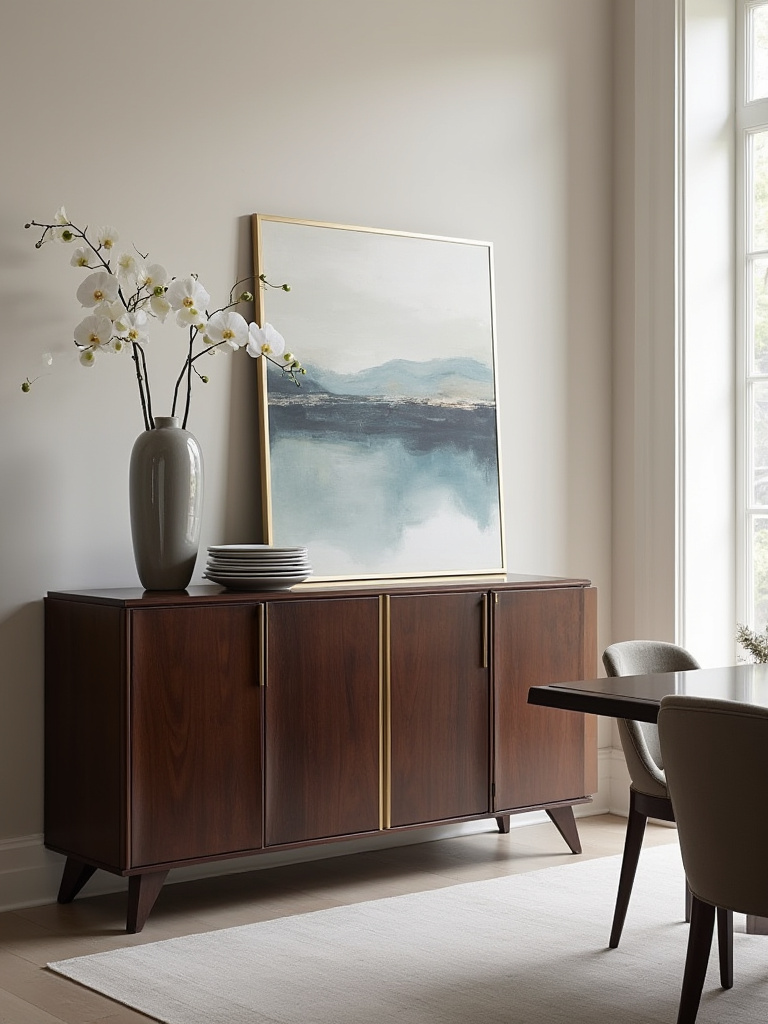
The noise you’ll hear is to get one that “matches” your table. Please don’t. A contrasting piece is so much more interesting! Pair a dark, moody Sheesham wood table with a sideboard painted in a vibrant indigo or a surprising saffron yellow. Or contrast a sleek, modern table with a vintage, bone-inlay cabinet. This is your chance to add a powerful dose of personality. The one thing that truly matters is scale. Make sure it’s proportional to your table and the wall it’s on—not too big, not too small.
A sideboard isn’t just storage; it’s a canvas for your creativity.
10. Consider Durable and Easy-to-Maintain Furniture Materials
Let’s talk about the soul of the furniture: the materials. I have a deep love for solid wood, especially woods like Sheesham and mango that are so central to Indian craftsmanship. They are incredibly dense and durable, with rich grains that tell a story. This isn’t furniture you’ll replace in five years; it’s furniture your grandchildren might fight over. The little dings and scratches it gathers over time aren’t flaws; they’re the patina of a life well-lived.
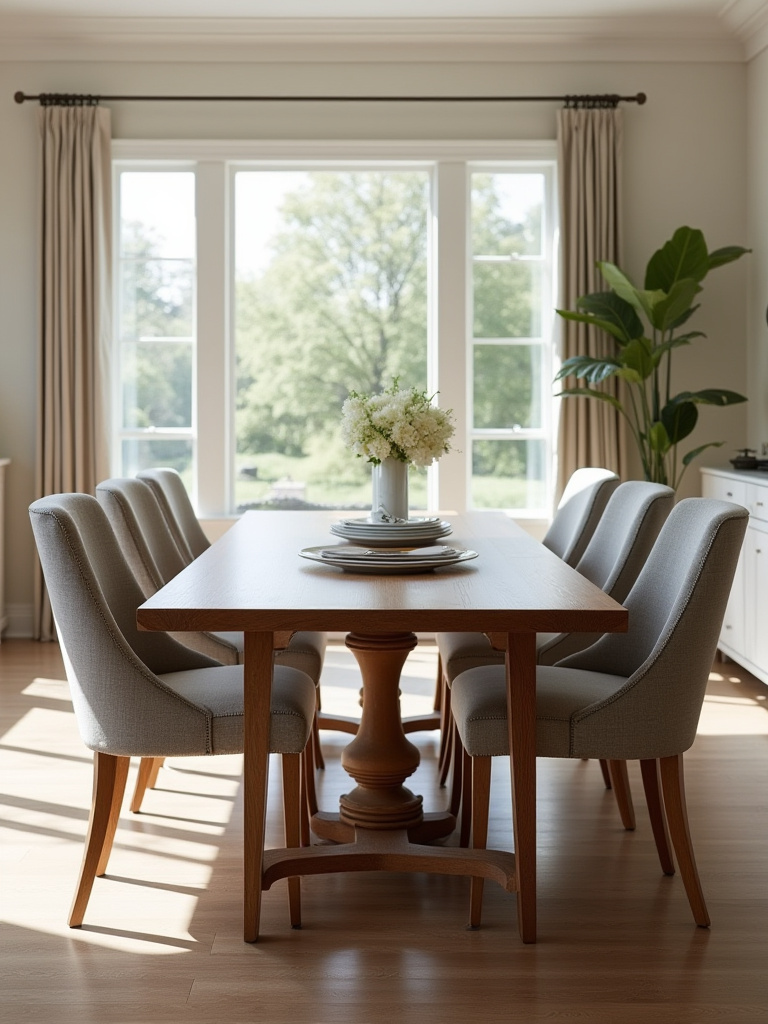
But durability comes in many forms. A tabletop made of quartzite is nearly indestructible and incredibly beautiful. High-quality performance fabrics for chairs can stand up to anything. What I want you to avoid is the stuff that pretends to be something it’s not—the particleboard with a paper-thin wood veneer that will peel and chip if you look at it wrong. That’s just throwing money away. Read the descriptions carefully. Ask questions. Is it solid wood or “wood product”? That one question makes all the difference.
Invest in real materials made by real artisans. You will feel the difference in your home every single day.
Core Furniture Selection and Setup (Part 2)
We’ve chosen our key pieces. Now, let’s place them with intention to make sure the room not only looks good but feels good to be in.
11. Optimize Table and Chair Placement for Smooth traffic flow
This goes back to our first point about measuring, but it’s about more than just numbers. It’s about choreography. A well-laid-out dining room allows for a graceful dance. People should be able to get up from the table without forcing everyone else to suck in their stomachs and slide their chairs forward. The host should be able to move from the kitchen to the table with ease.
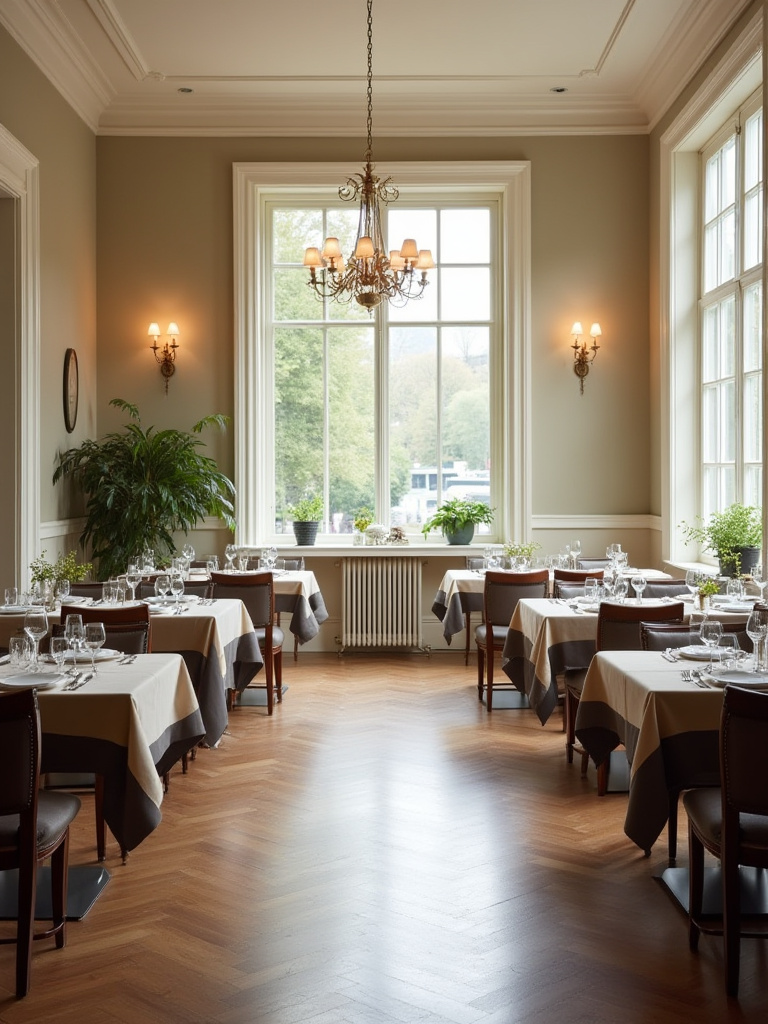
Here’s the shortcut I use: the “teapot test.” Once you have your furniture placed, walk from the kitchen to the dining table with an imaginary full teapot. Then, walk around the table as if you’re offering tea to each guest. Are there any tight spots? Any corners you have to navigate too carefully? If you feel yourself tensing up during this imaginary walk, you need to adjust the layout. A centered table isn’t always the answer. Sometimes, shifting it slightly off-center can open up a much wider, more gracious pathway.
Function is the foundation of good design. Without it, beauty is useless.
Styling and Enhancement Techniques (Part 1)
Now that the foundation is solid and the core pieces are in place, it’s time to add the layers of magic—the elements that create atmosphere and personality.
12. Elevate Ambiance with Strategic Dining Room Lighting
Lighting is everything. I mean everything. It is the single most powerful tool for transforming the mood of a room. The biggest mistake people make is having one single, harsh overhead light. It casts unflattering shadows and makes everyone feel like they’re under interrogation. What you need are layers.
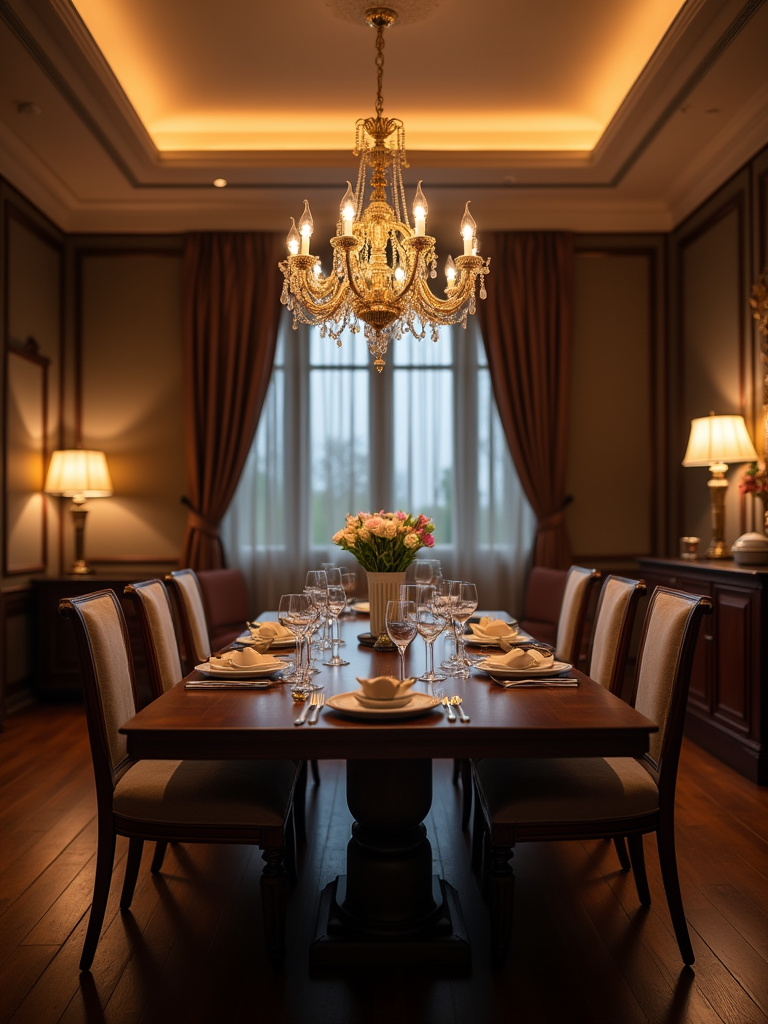
Start with a beautiful statement fixture over the table—a chandelier, a modern pendant, a cluster of lanterns. This is your jewelry. But here’s the secret sauce: put it on a dimmer. This is non-negotiable. Bright for a family game night, medium for a lively dinner, and low and warm for an intimate, romantic meal. Then, add other sources of light. A lamp on your sideboard, wall sconces, or even just candlelight. That soft, layered glow is what makes a space feel warm, inviting, and truly magical.
Good lighting makes everyone and everything look more beautiful. It’s the kindest element in design.
13. Define the Space with an Appropriately Sized Area Rug
A rug under a dining table is like the perfect frame for a masterpiece. It anchors the furniture, defines the dining area (especially in an open-plan space), and adds a layer of color, pattern, and texture. But getting the size right is critical. The common BS is just to get a rug that fits the table. Wrong. It needs to fit the table and the chairs when they are pulled out.
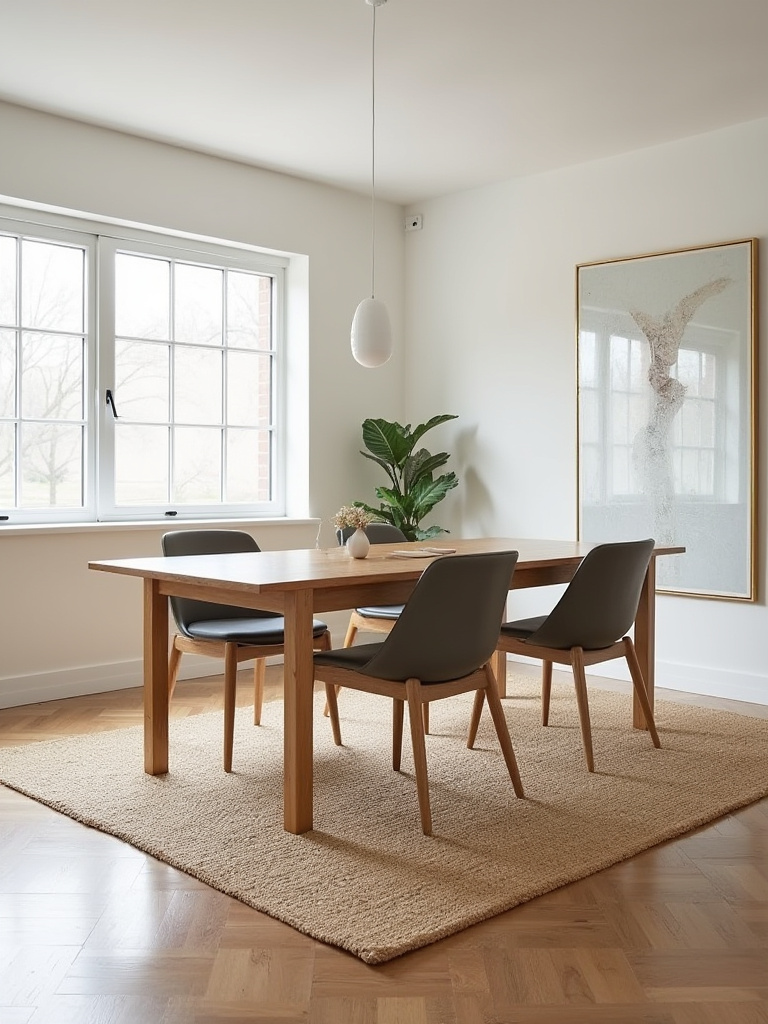
The rule is simple: all four legs of a chair should remain on the rug when someone is seated. If the back legs slip off the edge, it creates an annoying wobble and can become a tripping hazard. This usually means you need a rug that extends at least 24 inches beyond the edge of the table on all sides. As for material, go for a low-pile wool or a durable flatweave like a dhurrie. They are much easier to clean and to slide chairs on than a high-pile shag rug. Imagine trying to get a spilled glass of red wine out of a shag rug. Nightmare.
A dhurrie from Jaipur or a hand-knotted carpet from Kashmir doesn’t just warm your floors; it infuses your home with centuries of artistry.
14. Infuse Personality with Coordinated Wall Art and Decor
Bare walls make me sad. Your dining room is the perfect gallery for art that you love. It can be a large statement piece, a gallery wall of family photos, or even a beautiful textile hung like a tapestry. I love using framed pieces of antique saris or stunning Kalamkari textiles. They bring so much color, story, and soul to a space for a fraction of the cost of a large painting.
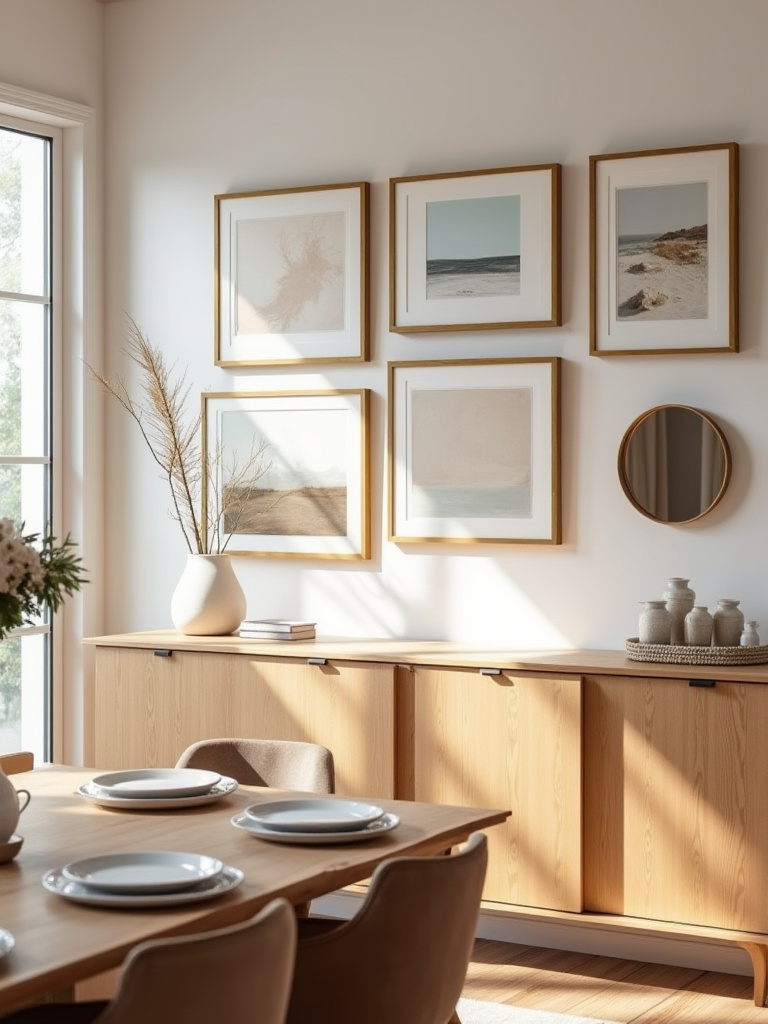
Don’t be afraid to go big. One of the most common mistakes I see is art that is too small for the wall, making it look like a postage stamp on a giant envelope. If you have a beautiful piece, let it command the space. And don’t forget mirrors! A large, well-placed mirror can double the light in a room and create the illusion of more space. An antique mirror with a carved wooden frame can be a work of art in itself.
The art on your walls should be a window into what you love and where you’ve been.
15. Create Inviting Table Settings for Every Occasion
Your table setting is your greeting to your guests. It’s the first thing they see and it says, “I’m so happy you’re here. I’ve prepared this space for you.” This doesn’t mean you need fine china and a thousand forks. It means creating a moment of beauty and intention. A simple linen runner, some cloth napkins, and a small vase of flowers from your garden can be more beautiful than the most elaborate setting.
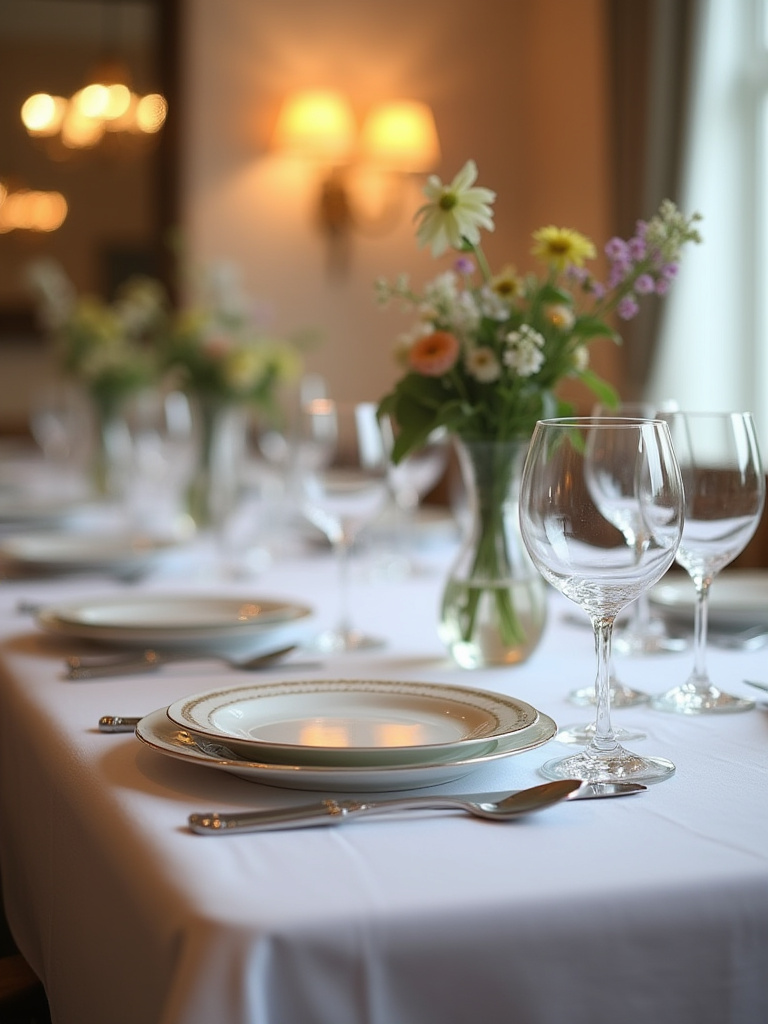
I love to mix and match. Pair your modern white plates with vintage bronze serving bowls (kansa ware) from India. Use colorful, block-printed napkins to add a pop of pattern. Forget perfection. The most beautiful tables have a sense of ease and personality. My favorite shortcut for an instant centerpiece? A bowl of fresh lemons or pomegranates. It’s simple, colorful, organic, and costs almost nothing.
Your table is a canvas. Have fun painting it.
Styling and Enhancement Techniques (Part 2)
We’re almost there. These are the final flourishes, the little details that make a room feel complete and cared for.
16. Utilize Decorative Accents to Complete Your Dining Room’s Look
Accents are the finishing touches, the punctuation marks of your design story. A stack of beautiful books on the sideboard, a collection of ceramic vases, a sculptural candle holder—these are the things that make a room feel personal and lived-in. The key is to curate, not clutter. A few well-chosen objects have far more impact than a sea of random stuff.
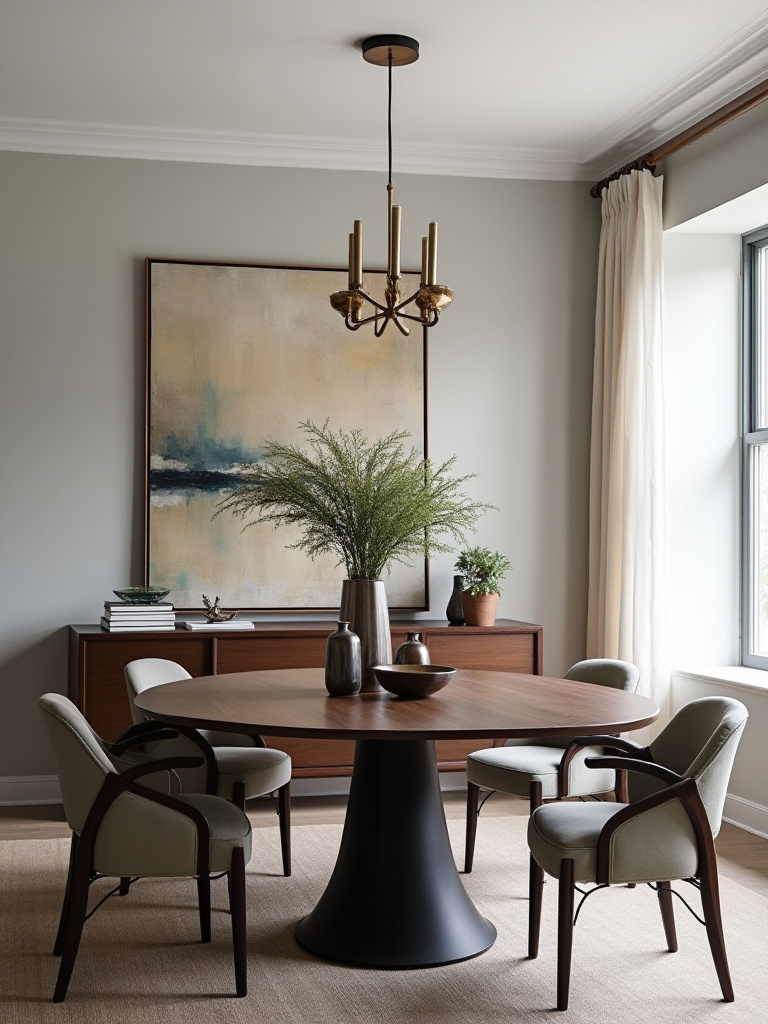
Group objects in odd numbers—threes and fives are visually pleasing. Vary the heights and textures. A tall, smooth ceramic vase next to a low, rough wooden bowl and a metallic candle holder creates a beautiful, balanced vignette. A friend of mine learned this the hard way. Her sideboard was covered in dozens of little knick-knacks. It just looked messy. We edited it down to three key pieces, and suddenly the entire corner of the room looked more sophisticated and intentional.
Less is often more, as long as the “less” is more meaningful.
Maintenance and Long-Term Optimization (Part 1)
You’ve created a beautiful space! Now, let’s make sure it stays that way for years to come. A little care goes a long way.
17. Implement Regular Cleaning Routines for Furniture Longevity
This is simple but crucial. Care for your furniture like it’s a living thing. Dust your wood pieces regularly with a soft cloth. It’s not just about cleanliness; dust particles can be abrasive and can dull the finish over time. For wood, avoid those silicone-heavy aerosol sprays. They create a buildup that is difficult to remove. A simple, slightly damp cloth is often all you need.

Spills are going to happen. The trick is to act fast. Blot, don’t rub. Have a little kit ready with a clean cloth and a gentle, material-specific cleaner. Being prepared turns a potential disaster into a minor inconvenience. I think of it as a ritual of respect for the artisan who crafted the piece and the tree that gave its life for it.
Caring for your furniture is an act of gratitude.
18. Protect Wood Surfaces from Scratches and Heat Damage
Wood is strong, but it is not invincible. Heat and moisture are its enemies. Coasters, placemats, and trivets are your best friends. They are not just decorative; they are essential shields that protect your investment. Think of them as beautiful, functional insurance policies.
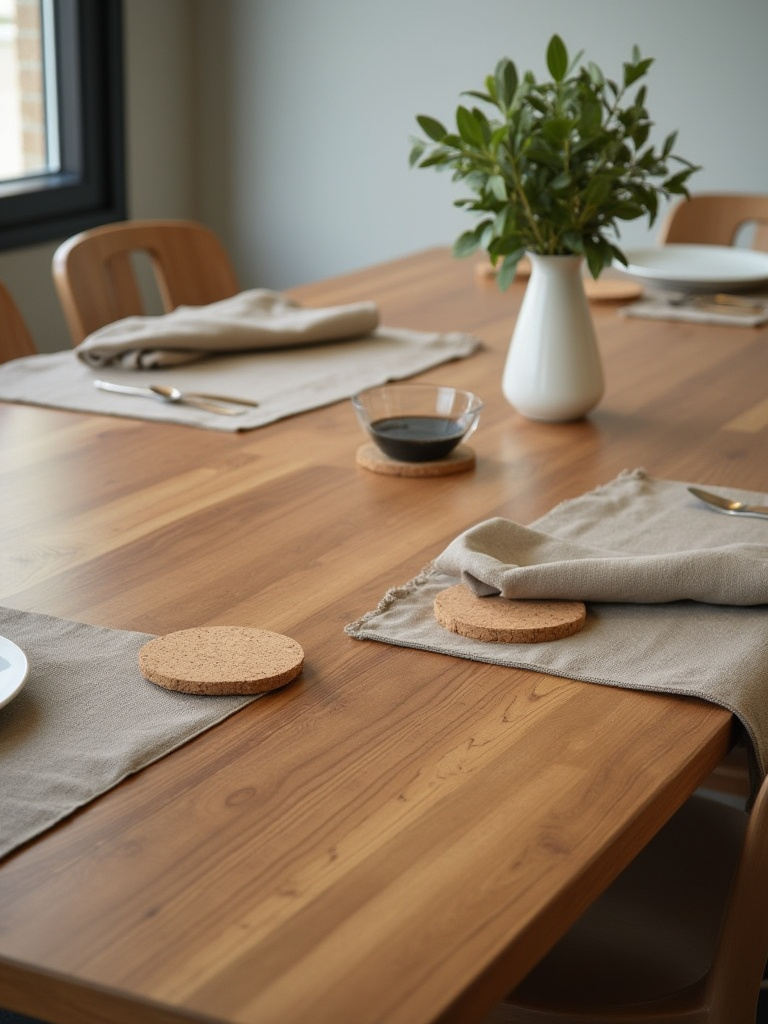
Here’s a shortcut I love for an old, slightly scratched table: a good quality wax polish. It can fill in minor scratches, nourish the wood, and restore a beautiful, soft luster. Applying it is a strangely meditative process, and the results are so rewarding. For chair legs, put little felt pads on the bottom. It will save your floors from scratches and make the chairs glide smoothly and quietly.
Protect your pieces, and they will serve you beautifully for a lifetime.
19. Address Upholstery Care and Stain Removal Effectively
Upholstered chairs add so much comfort and elegance, but they can feel high-maintenance. They don’t have to be. First, when you buy them, find out the cleaning code (it’s usually on a tag under the cushion). This will tell you whether you can use water-based cleaners, solvent-based cleaners, or if it’s vacuum-only. Knowing this is half the battle.
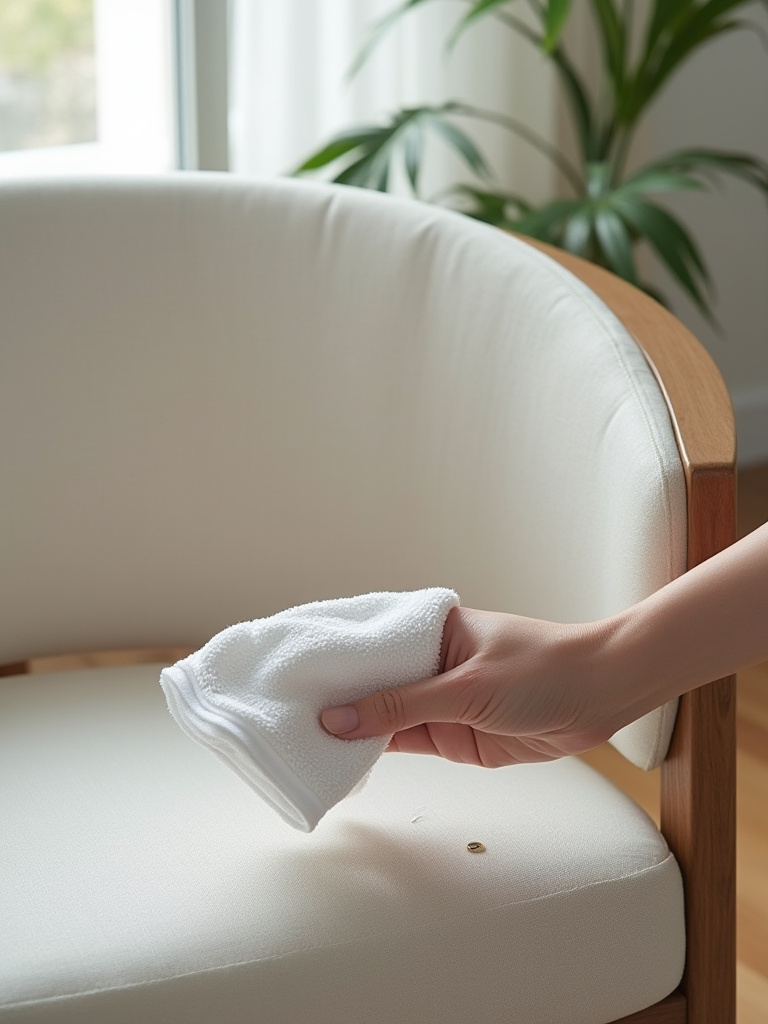
For maintenance, vacuum them regularly with an upholstery attachment. It prevents dirt from getting ground into the fibers. When a spill happens—and it will—remember the rule: blot immediately. Never scrub, as it can damage the fabric fibers and spread the stain. If you’re nervous, start by blotting with a clean cloth dampened with just water. For anything more serious, use the cleaner your code recommends and always test it on a hidden spot first.
A little preventative care can keep your chairs looking pristine for years.
20. Reconfigure Dining Layout for Seasonal Updates or Special Events
Your dining room shouldn’t be a static museum. Let it breathe and change with your life and the seasons! Just because the table is in one spot doesn’t mean it has to stay there forever. For a big party, you might push the table against a wall to create a buffet and open up the room for mingling. In the winter, you might pull it closer to a fireplace to create a cozy, intimate feeling.
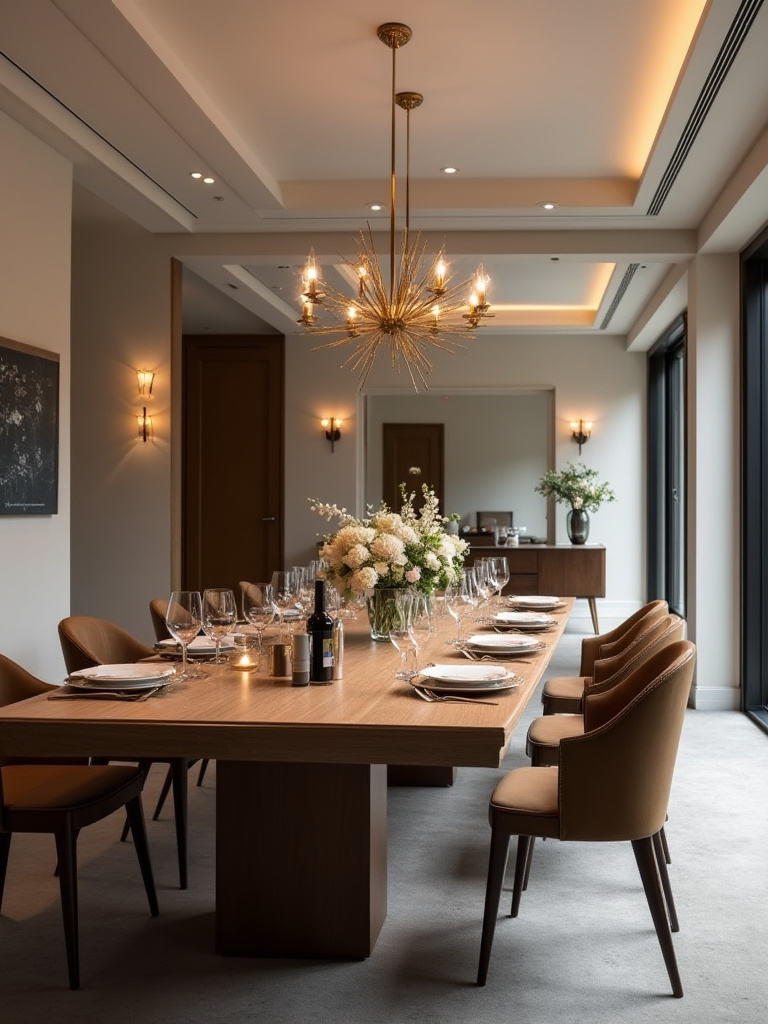
Don’t be afraid to experiment. Move things around for a weekend and see how it feels. A change in layout can completely transform the energy of the space and make it feel new again without buying a single thing. It’s the easiest, cheapest, and most effective way to refresh your space.
Let your home be a dynamic reflection of your life, not a fixed set.
Maintenance and Long-Term Optimization (Part 2)
Finally, know when to call in the experts. You can’t do everything yourself, and that’s okay.
21. Extend Furniture Life with Professional Maintenance and Repairs
Your beautiful furniture is an investment. Sometimes, that investment needs the care of a professional. If a chair leg becomes wobbly, a deep scratch appears on your tabletop, or your upholstery needs a serious deep clean, don’t try to be a hero with a DIY YouTube tutorial unless you really know what you’re doing. A bad repair can do more damage than the original problem.
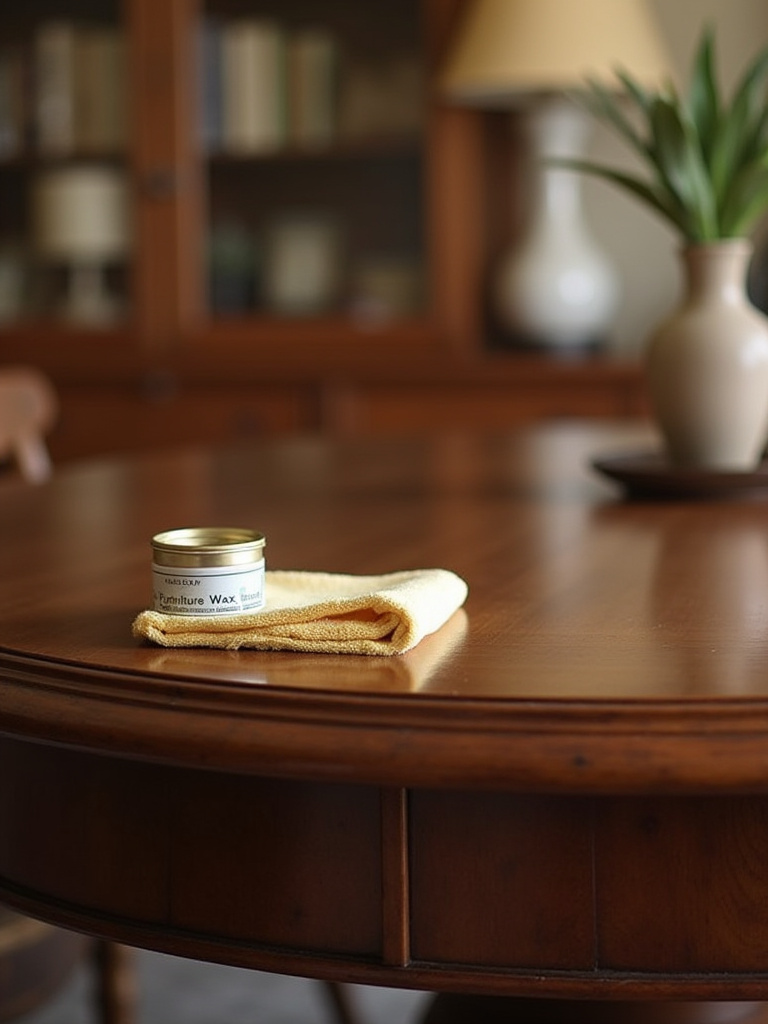
Find a good local furniture restorer before you need one. Ask for recommendations. Think of them like a tailor for your furniture. They have the skills and the specific tools to fix issues properly, preserving the integrity and value of your piece. A professional deep clean for your upholstered chairs every few years can bring them back to life in a way you never could. Investing a small amount in professional care can save you the massive expense of having to replace a beloved piece.
Honoring craftsmanship means knowing when to call in another craftsman.
Conclusion
So there you have it. Creating a dining room with soul is a journey, not a destination. It’s about more than just filling a space with objects. It’s about listening to your home, honoring your lifestyle, and curating a collection of pieces that will hold the stories of your life. It’s about creating a warm, inviting stage for countless beautiful memories to be made.
Don’t feel overwhelmed. Start with one thing. Measure your space. Find one piece of art that makes your heart sing. Begin with the small steps, and trust your intuition. Your perfect dining room is waiting for you. It’s a space filled with warmth, beauty, and connection—a room that feels, in every way, like home. Now go and create it.
